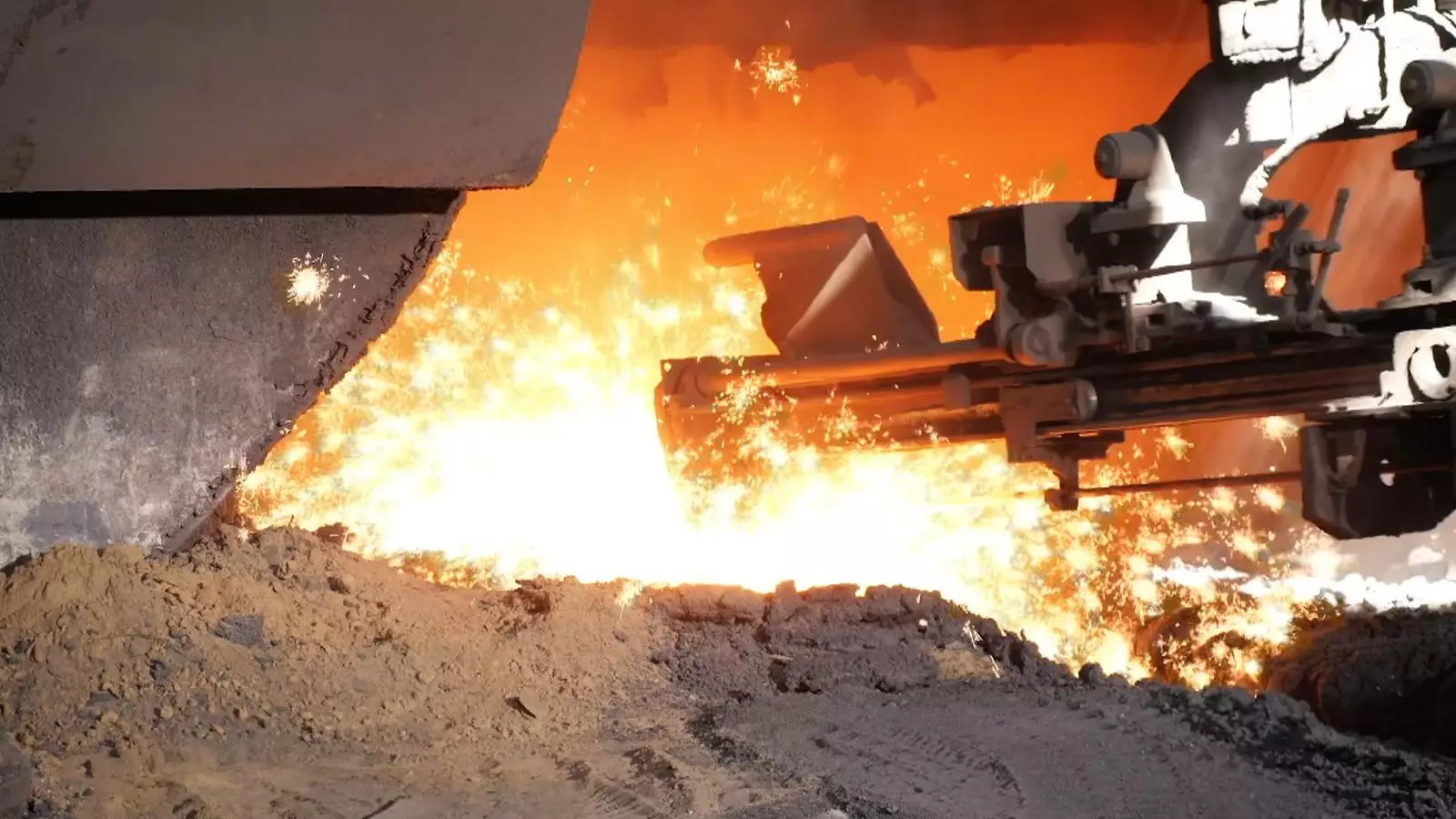In a disheartening twist of fate, the final bastions of steel production in the UK are teetering on the brink of irreversible closure. The bombshell announcement from Jingye, the Chinese conglomerate that acquired British Steel in 2020, has sent shockwaves through an industry already grappling with existential challenges. With a sudden halt to vital orders for iron ore, coal, and other raw materials meant to fuel the last blast furnaces in Scunthorpe, the future of British steelmaking hangs in an unsettling balance. Such rapid developments reflect an urgent reality that has implications far beyond the immediate economic repercussions – they pose a serious threat to national security and industry resilience.
A Legacy Undermined by Uncertain Investments
The closure of Scunthorpe’s blast furnaces would not merely extinguish jobs; it would mark a significant decline in Britain’s capacity to produce virgin steel—the type forged from raw materials rather than recycled metals. Moving away from such production magnifies the risks associated with over-dependence on imports, raising stirring questions about the UK’s ability to sustain its own infrastructure. With the complex machinery of steel production intricately linked to national security, this scenario stresses the urgency required for decisive action.
The recent standoff in negotiations between the UK government and Jingye over a £500 million investment package has only fueled uncertainty in an already strained industrial landscape. Jingye’s rejection of the funds—equivalent to an offer made to another steel giant, Tata Steel—underscores a deep-rooted apprehension among stakeholders concerning the viability of steel production in the UK. This situation is rather ironic, seeing that the same government is rallying for a strong stance against vulnerabilities in supply chains, especially with the looming specter of trade wars reignited by political turbulence across the Atlantic.
The Count Down to Nationalisation: A Radical Gambit?
As the clock ticks down to possible closure, the notion of nationalising British Steel becomes increasingly attractive yet fraught with complications. While the Department for Business and Trade deliberates this drastic measure, concerns arise regarding the ability of the government to efficiently manage a potentially loss-making venture. Therein lies the heart of the dilemma: should taxpayers foot the bill for preserving what many may see as an outdated industry? Or is the steel sector a vital cog in the machinery of the nation’s defense and infrastructure?
Compounding this issue is the shifting political landscape, most recently influenced by the Trump administration’s return to power, which threatens to unleash a new wave of protectionism. Such a backdrop amplifies calls for nations to bolster their own resources. Teams of industry advocates are scrambling to assert the need for immediate interventions to secure manufacturing independence, as exemplified by Gareth Stace, head of the UK Steel group. His claims underscore the urgency with which the government must act to prevent the collapse of a sector that has shaped the very fabric of British industrial identity.
The Implications for National Security and Economic Stability
Moving steel production outside national borders not only jeopardizes jobs but also leaves the UK vulnerable to geopolitical tensions. With fewer domestic sources for essential materials, our infrastructure projects could become handicapped by supply chain disruptions, an alarming proposition at a time when geopolitical volatility is intensifying. For an island nation that prides itself on resilience and innovation, the prospect of depending on foreign entities for this critical resource is nothing short of a betrayal of British interests.
The steel industry’s malaise serves as a tragic metaphor for broader economic challenges facing the UK. It reaches beyond fiscal responsibilities; it demands introspection about our long-term industrial strategies and commitments. The current predicament presents an opportunity for stakeholders from all corners—government, industry, and labor—to forge a collaborative path forward, one that prioritizes the safeguarding of our industrial capacity against the tide of globalization and shifting political allegiances.
It is high time that the government acknowledges the steel industry not merely as an economic asset, but as a cornerstone of national security, deserving of proactive investment and strategic foresight. As the clock ticks relentlessly toward potential closure, the responsibility rests on our leaders to take the necessary steps in order to avert a steelmaking tragedy that could echo through the national psyche for generations.



Leave a Reply